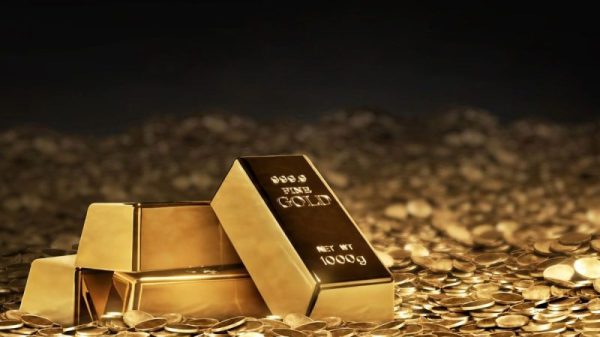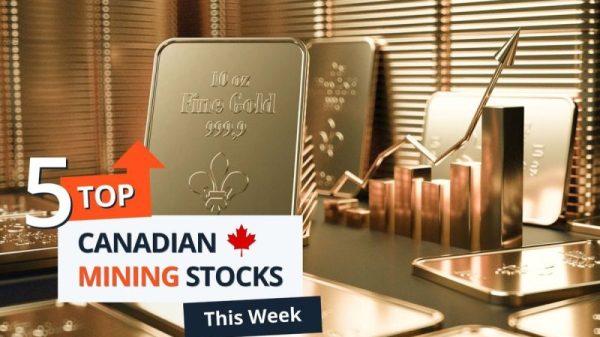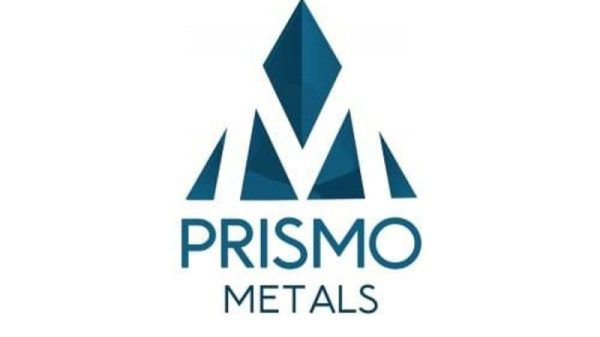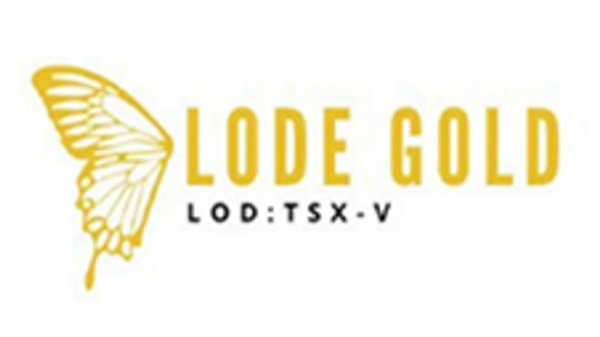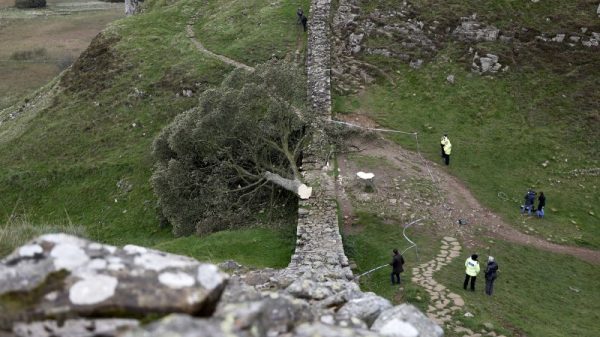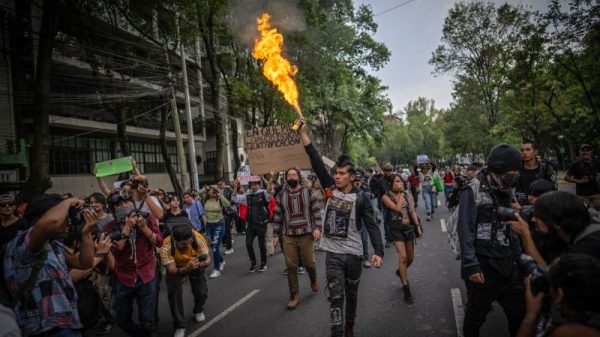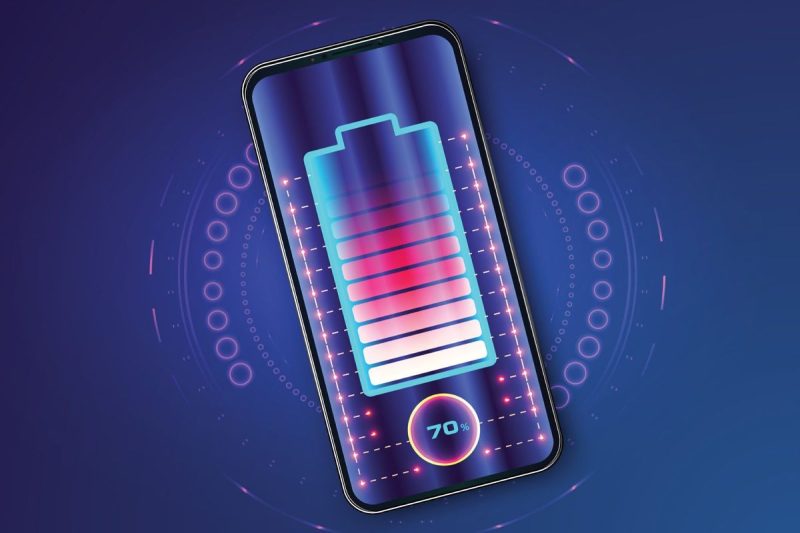Lithium prices rose to new all-time highs in November 2022, but 2023 has been a tougher year for the battery metal, with prices for carbonate and hydroxide both falling through April. While they recovered slightly and stabilized in the second quarter of the year, they fell back down in Q3.
According to Fastmarkets, sluggish demand in China and high inventories have kept prices low. Many cathode producers are purchasing small amounts of lithium on the spot market to take advantage of falling prices. This has impacted prices in the US and Europe as well, as lower levels in China have kept buyers cautious. Going into Q4, however, China’s lithium carbonate prices have rebounded, experiencing their first gain since August.
Ongoing trends affecting the lithium space right now include the US Inflation Reduction Act, sustainability in the sector and the need for more financing and permitting to bring new supply online to meet long-term demand.
Even with easing prices, many lithium stocks are up year-to-date. Below is a look at the top lithium stocks with year-to-date gains. The list below was generated using TradingView’s stock screener on October 10, 2023. It includes companies listed on the NYSE, NASDAQ, TSX, TSXV and ASX; all top lithium stocks had market caps above $50 million in their respective currencies when data was gathered.
Top US lithium stocks
1. Atlas Lithium (NASDAQ:ATLX)
Year-to-date gain: 313.5 percent; market cap: US$287.45 million; current share price: US$26.96
Atlas Lithium is a strategic minerals company with a portfolio of Brazilian battery metals projects. The company is currently focused on advancing and developing the Neves project area within its wholly owned Minas Gerais hard-rock lithium project. In February, Atlas discovered the Anitta pegmatite target at Neves, and the company has been working since then to delineate a resource in and around Anitta. The State of Minas Gerais granted the Neves project priority review status for its environmental permitting and licensing in June.
In addition to developing Neves, Atlas plans to build a lithium processing plant that can produce up to 300,000 metric tons (MT) of lithium concentrate per year. In January, the company signed a memorandum of understanding with Mitsui (OTC Pink:MITSY,TSE:8031) for US$65 million of funding in tranches; in return, Mitsui will obtain the right to purchase 100 percent of the plant’s output. In a June update, Atlas announced it had purchased land for the plant and engaged consultants for planning and design.
The company’s share price performed strongly in April, which began with news that drilling at Anitta intersected high-grade lithium, including 4.4 percent lithium oxide. Later that month, Atlas shared metallurgical test results from Neves. They show that heavy liquid separation achieved a “very high grade of 7.22 percent,’ while standard dense media separation (DMS) resulted in commercial-grade lithium concentrate
Atlas’ share price peaked on May 2 at US$41.46, the day the company announced a royalty transaction with Lithium Royalty (TSX:LIRC,OTC Pink:LITRF); through the deal, Atlas received an immediate US$20 million for a 3 percent gross overriding revenue royalty. However, company shares plummeted to US$16.93 on May 4 before leveling out to trade around US$20 through the remainder of Q2.
Atlas’s share price began trending upward in mid-July, when it discovered a new zone at Anitta that contains a new high mark for lithium mineralization: an interval between 9.2 and 10.3 meters from the surface grading 5.23 percent. On July 31, the company expanded the Anitta pegmatite trend from 1.8 to 2.3 kilometers and separated the trend into three zones — Anitta 1, Anitta 2 and the freshly discovered Anitta 3.
Atlas announced another discovery on September 20, a new spodumene pegmatite dubbed Anitta 4; drilling has shown intersects bearing “coarse, large crystals.” In a release, Nick Rowley, Atlas’ recently appointed vice president of business development, celebrated the discovery and said, “Our goal is to become a low-cost, high-quality lithium concentrate producer by mid-2025.” Atlas has also added industry veterans to other positions in recent months, including Martin Rowley as lead strategic advisor on September 26 and James Abson as chief geology officer on October 2. Its share price hit a Q3 high of US$30.64 on September 29.
Top Canadian lithium stocks
1. Q2 Metals (TSXV:QTWO)
Year-to-date gain: 202.79 percent; market cap: C$60.23 million; current share price: C$0.75
Q2 Metals is an exploration company focused on advancing its Mia lithium property in the Eeyou Istchee James Bay region in Québec, Canada. In March, Q2 added to its lithium portfolio in the region when it acquired the Stellar lithium property, which is located just north of Mia. Outside of lithium, the company owns the Big Hill and Titan gold projects in Queensland, Australia.
After starting 2023 at C$0.40, Q2’s share price began climbing after the January 23 appointment of Neil McCallum as a director and the company’s vice president of exploration. McCallum identified and staked Patriot Battery Metals’ (TSXV:PMET,OTCQX:PMETF) Corvette lithium property, which is also located in Eeyou Istchee James Bay. On the back of that news and Q2’s C$10 million private placement financing, the company’s share price reached C$1.05 on February 6.
Q2 commenced 2023 exploration at the Mia project in early April, and the company completed Phase 1 — induced polarity and resistivity surveying — later that month. On May 31, Q2 began Phase 2, which includes ground mapping and sampling. Although its share price cooled off at the beginning of Q2, the exploration news helped move it back up to a year-to-date peak of C$1.07 that day.
While Q2 had to shut down work in early June due to spreading wildfires in Quebec, the company was able to resume exploration in late August. On September 27, Q2 announced the completion of the Phase 2 mapping and sampling. The program identified six new spodumene occurrences on top of the three the company had previously discovered.
“The recent work program achieved our best case-scenario result of defining several spodumene-bearing pegmatites along the Mia Trend,” McCallum said in a release. Moving forward, Q2 plans to begin its drill program in mid-October.
2. Argentina Lithium & Energy (TSXV:LIT)
Year-to-date gain: 103.7 percent; market cap: C$72.84 million; current share price: C$0.55
Argentina Lithium & Energy is focused on exploring and advancing its lithium projects in Argentina’s portion of the famous Lithium Triangle. The company’s portfolio of claims includes over 64,000 hectares on four salars in the Salta and Catamarca provinces, some owned and some under option.
Argentina Lithium spent the first half of 2023 exploring its Salta-based Rincon West project, for which the company wholly owns 460.5 hectares and has entered option agreements for an additional 3,282.3 hectares in adjacent claims. On May 31, the company completed its first drill campaign at the project, targeting the Villanoveño II block. The final drill hole intersected a 258 meter thick interval ranging from 287 to 402 milligrams per liter.
The company’s share price slowly trended downward throughout the year from its then-high of C$0.39 in Q1, reaching a low point of C$0.20 in early September. However, that changed when news of a US$90 million investment from automaker Stellantis (NYSE:STLA) dropped on September 27, sending the lithium company’s share price skyrocketing to C$0.56 on October 2.
The proceeds from the deal, which closed on October 5, will be used to advance Argentina Lithium’s projects towards production. As part of the deal, Stellantis signed a seven year offtake agreement for 15,000 MT of lithium per year. The automaker now owns 19.9 percent of the lithium company.
3. Surge Battery Metals (TSXV:NILI)
Year-to-date gain: 95.56 percent; market cap: C$142.67 million; current share price: C$0.88
Surge Battery Metals is true to its name, with the Nevada North and Teels Marsh lithium projects in Nevada, US, and the Surge nickel project in BC, Canada. Surge is actively expanding and exploring its flagship Nevada North project, which hosts a lithium clay deposit.
After trading under C$0.30 through the end of April, Surge’s share price broke through that level in early May, when the company reported positive results from metallurgical testwork at Nevada North; it continued upward on the back of announcements regarding several contracts, including deals for hydrological studies and geological surveying.
On June 1, Surge announced a C$7.16 million private placement that included a C$5.36 million strategic investment at C$0.40 per share by American Lithium (TSXV:LI,NASDAQ:AMLI), which now owns 9.7 percent of Surge’s issued and outstanding shares. Surge’s share price hit a Q2 high of C$0.62 on June 5.
July saw Surge double its land position at Nevada North through staking and an earn-in agreement with M3 Metals (TSXV:MT), which owns adjacent claims, to a total of 5,180 hectares. The company began Phase 2 drilling at Nevada North in August, and its share price began moving upward later that month after it announced that the first five drill cores intersected “highly favorable clay horizons.”
Surge’s share price continued its steep climb through September. The company released analytical results for the first drill hole on September 12, and they show that the highest-grade zone ranges from 3,090 to 8,070 parts per million lithium over 80 feet. The following week, the company contracted Kemetco Research to perform end-to-end process testing and trials with the goal of determining and testing the project’s optimum flow sheet. Its share price peaked days later, hitting C$1.51 on September 25.
While its share price has since slipped from that high, Surge has continued to release positive news. On September 26, it announced results from hole two, which reached a peak of 5,820 parts per million; two days later, it upgraded to trade on the OTCQX under the symbol NILIF. The company’s most recent news came on October 3, when it entered into agreements to purchase 25 percent of the mineral rights to private lands within its project.
Top Australian lithium stocks
1. Wildcat Resources (ASX:WC8)
Year-to-date gain: 1,587.5 percent; market cap: AU$249.61 million; current share price: AU$0.41
Wildcat Resources is a lithium and gold explorer with an eye on Australia’s top mining provinces. The company has three main projects: the Bolt Cutter lithium and Tabba Tabba lithium-tantalum projects, both of which are in Western Australia’s Pilbara region, and the Mount Adrah gold project in New South Wales.
After spending much of the first half of the year around AU$0.03, Wildcat’s share price took off when it entered into a binding agreement to acquire the Tabba Tabba lithium-tantalum project on May 17. The last time Tabba Tabba was explored was in 2014, according to Wildcat, and at that time lithium was not in high demand. By the beginning of Q3, the company’s share price had reached AU$0.155.
Wildcat announced on July 5 that early surveying and field work at Tabba Tabba had identified new pegmatites, and it began drilling at the project on July 14 with the goal of discovering priority targets. Wildcat’s share price continued to climb higher through August, during which time the company began follow-up drilling with a second rig at the project; it reached AU$0.40 on August 28.
Although its share price fell after that peak, it shot back up on September 18. That day, Wildcat released the first assays from Tabba Tabba, which confirmed “high-grade lithium mineralisation from surface in northern and central pegmatite clusters.” The central cluster had a highlight interval of 85 meters grading 1.1 percent lithium oxide, including 59 meters at 1.5 percent.
On October 12, Wildcat completed its 100 percent acquisition of Tabba Tabba. The company also shared the second batch of assays from drilling the same day, highlighting the Leia pegmatite in the central cluster, which has already been discovered to be greater than 1.5 kilometers in strike length and is open along strike. Wildcat is still waiting on results for 68 drill holes, the majority of which are from the Leia pegmatite. It has now begun diamond drilling at Leia and is targeting the extensions of the thickest lithium zones.
The company’s share price climbed following the news to a year-to-date high of AU$0.475 on October 16.
2. Latin Resources (ASX:LRS)
Year-to-date gain: 187.88 percent; market cap: AU$697.52 million; current share price: AU$0.29
Latin Resources is focused on exploring its Salinas pegmatite project in Brazil’s Aracuai lithium province, which hosts the Colina, Colina West and Fog’s Block targets. Latin Resources expanded the project by over 350 percent in February, when it acquired tenements covering 29,940 hectares in the region. It also owns the Catamarca pegmatite project in Argentina and an 18 percent interest in Solis Minerals (TSXV:SLMN,OTCQB:SLMFF), a battery metals company in South America.
At the end of March, Latin Resources signed a memorandum of understanding with two Minas Gerais state government entities that will help the company as it develops Salinas and support building a lithium battery sector in the state. The government has designated Salinas a priority project. The company also completed a private placement of AU$37.1 million with funds from multiple entities, including North American battery metals funds.
On June 20, Latin Resources released an updated resource estimate for the Colina deposit based on a resource definition drilling program; the news sent the company’s share price flying upward from AU$0.20 to AU$0.28 over the following days. According to the report, the deposit is host to total resources of 45.19 million MT grading 1.32 percent, which results in 597,400 MT of contained lithium oxide, or 1.48 million MT of lithium carbonate equivalent — a 241 percent increase over Colina’s previous resource estimate.
The company is continuing to explore Salinas, and on June 28 it announced discoveries of two spodumene-rich pegmatites. According to the company, these “confirm the presence of a ‘district scale’ lithium corridor within Latin’s tenements” that extends up to 26 kilometers southwest of the Colina deposit. Latin Resources’ share price hit a year-to-date high of AU$0.42 on July 31.
In August, the company released the results of metallurgical testing of Colina ore using DMS, which yielded spodumene concentrate grading 5.5 percent lithium oxide at a 93.1 percent recovery rate. Later that month, further high-grade results continued coming, with assays from diamond drilling at Colina and exploration drilling at Fog’s Block.
Latin Resources ended Q3 by releasing a preliminary economic assessment for Colina, which it is now referring to as the Colina project. According to the document, the mine would have a two stage plan with anticipated Phase 1 annual production of 405,000 MT of 5.5 percent lithium spodumene concentrate with first production in 2026.
3. Liontown Resources (ASX:LTR)
Year-to-date gain: 117.84 percent; market cap: AU$6.5 billion; current share price: AU$2.93
Liontown Resources is constructing its Kathleen Valley lithium project, which is expected to begin production in mid-2024. The company commenced open-pit mining operations with the first blast at Kathleen Valley’s Mount Mann open pit on February 3. The material generated from this phase of operations will help with multiple aspects of construction, commissioning and ramp up.
Liontown has continued to make significant progress throughout 2023 at Kathleen Valley, including awarding necessary contracts for operations. For example, on May 10, it awarded the full open-pit mining services contract for the mine’s two open pits, and on July 19, it awarded the contract for spodumene and direct-shipped ore haulage.
The most recent and significant came on August 17, when the company awarded the contract for underground mining services to Byrnecut. The contract is valued at about AU$1 billion over four years, a total that includes “operating costs, sustaining capital and capital associated with operating the underground mine,” according to Liontown. The most recent project update on September 29 states that the project is still on schedule, but capital costs through first production have increased by 6 percent.
A big storyline for Liontown this year has been a potential acquisition by Albemarle (NYSE:ALB). Liontown’s share price rocketed upward from AU$1.53 to AU$2.57 on March 28, when the company rejected another takeover bid from the lithium major. That offer was at a price per share of AU$2.50; Liontown had previously rejected offers of C$2.20 and C$2.35 from the company. The company’s share price hit a year-to-date high of AU$3.15 on June 16.
In September, Albemarle made a final non-binding offer of AU$3 per share, and Liontown’s board stated that if a binding proposal was made at that price it would unanimously recommend that shareholders accept the offer. However, the situation has changed in recent weeks — Hancock Prospecting, which is owned by Australian billionaire Gina Rinehart, has increased its stake in Liontown in stages to ultimately reach 19.9 percent, a significant enough holding to allow her to block the deal. As such, the lithium major withdrew its proposal on October 15 due to what it called “growing complexities” with the deal.
FAQs for investing in lithium
How much lithium is on Earth?
While we don’t know how much total lithium is on Earth, the US Geological Survey estimates that global reserves stand at 22 billion MT. Of that, 9.2 billion MT are located in Chile, and 5.7 billion MT are in Australia.
Where is lithium mined?
Lithium is mined throughout the world, but the two countries that produce the most are Australia and Chile. Australia’s lithium comes from primarily hard-rock deposits, while Chile’s comes from lithium brines. Chile is part of the Lithium Triangle alongside Argentina and Bolivia, although those two countries have a lower annual output.
Rounding out the top five lithium-producing countries behind Australia and Chile are China, Argentina and Brazil.
What is lithium used for?
Lithium has a wide variety of applications. While the lithium-ion batteries that power electric vehicles, smartphones and other tech have been making waves, it is also used in pharmaceuticals, ceramics, grease, lubricants and heat-resistant glass. Still, it is largely the electric vehicle industry that is boosting demand.
Is lithium a good investment?
The lithium price has seen huge success over the past year, and many stocks are up alongside that. It’s up to investors to decide if it’s time to get in on the market, or if they’ll try to wait for a dip.
A wide variety of analysts are bullish on the market as electric vehicles continue to prosper, and lithium demand from that segment alone is expected to continue to rise. These experts believe the lithium story’s strength will continue over the next decades as producers struggle to meet rapidly growing demand.
How to invest in lithium?
Unlike many commodities, investors cannot physically hold lithium due to its dangerous properties. However, those looking to get into the lithium market have many options when it comes to how to invest in lithium.
Lithium stocks like those mentioned above could be a good option for investors interested in the space. If you’re looking to diversify instead of focusing on one stock, there is the Global X Lithium & Battery Tech ETF (NYSE:LIT), an exchange-traded fund (ETF) focused on the metal. Experienced investors can also look at lithium futures.
How to buy lithium stocks?
Lithium stocks can be found globally on various exchanges. Through the use of a broker or an investing service such as an app, investors can purchase individual stocks and ETFs that match their investing outlook.
Before buying a lithium stock, potential investors should take time to research the companies they’re considering; they should also decide how many shares will be purchased, and what price they are willing to pay. With many options on the market, it’s critical to complete due diligence before making any investment decisions.
It’s also important for investors to keep their goals in mind when choosing their investing method. There are many factors to consider when choosing a broker, as well as when looking at investing apps — a few of these include the broker or app’s reputation, their fee structure and investment style.
Securities Disclosure: I, Lauren Kelly, currently hold no direct investment interest in any company mentioned in this article.

